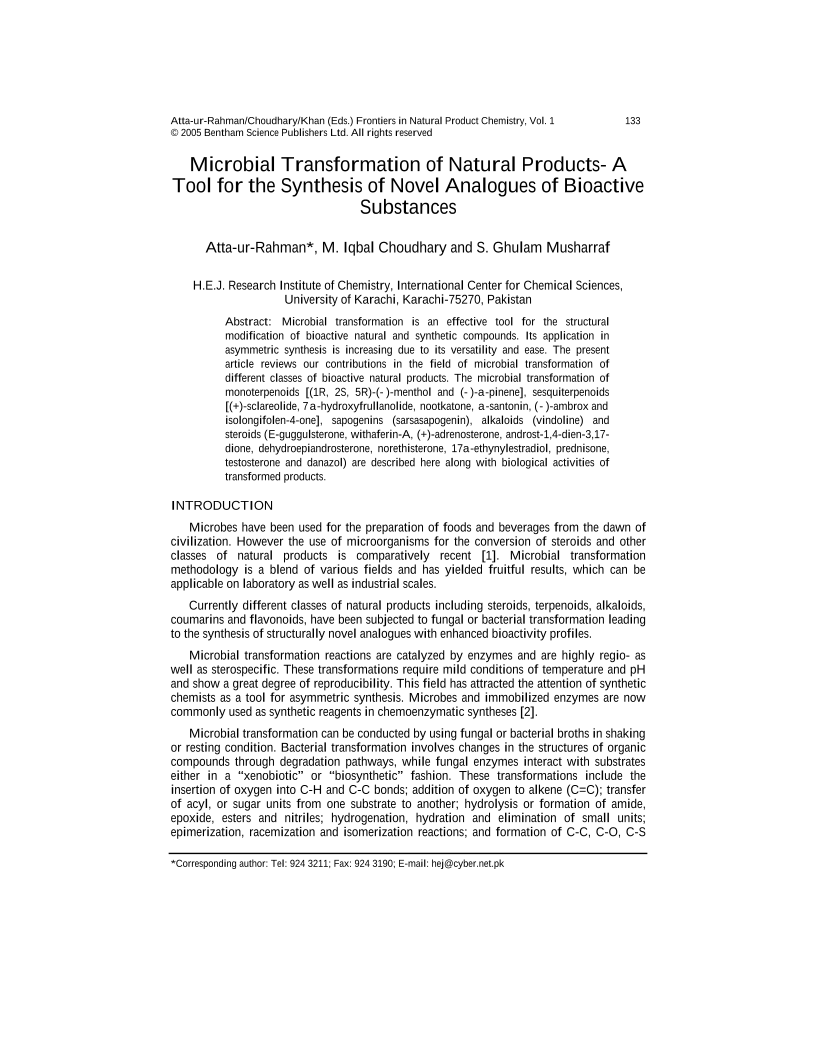Microbial Transformation of Natural Products- A Tool for the Synthesis of Novel Analogues of Bioactive Substances

- Authors: Atta-ur-Rahman, M. Iqbal Choudhary, S. Ghulam Musharraf3
-
View Affiliations Hide Affiliations3 H.E.J. Research Institute of Chemistry, International Center for Chemical Sciences, University of Karachi, Karachi-75270, Pakistan
- Source: Frontiers in Natural Product Chemistry: Volume 1 , pp 133-147
- Publication Date: January 2005
- Language: English
Microbial Transformation of Natural Products- A Tool for the Synthesis of Novel Analogues of Bioactive Substances, Page 1 of 1
< Previous page | Next page > /docserver/preview/fulltext/9781608052127/chapter-15-1.gif
Microbial transformation is an effective tool for the structural modification of bioactive natural and synthetic compounds. Its application in asymmetric synthesis is increasing due to its versatility and ease. The present article reviews our contributions in the field of microbial transformation of different classes of bioactive natural products. The microbial transformation of monoterpenoids [(1R, 2S, 5R)-(-)-menthol and (-)-a-pinene], sesquiterpenoids [(+)-sclareolide, 7a-hydroxyfrullanolide, nootkatone, a-santonin, (-)-ambrox and isolongifolen-4-one], sapogenins (sarsasapogenin), alkaloids (vindoline) and steroids (E-guggulsterone, withaferin-A, (+)-adrenosterone, androst-1,4-dien-3,17- dione, dehydroepiandrosterone, norethisterone, 17a-ethynylestradiol, prednisone, testosterone and danazol) are described here along with biological activities of transformed products.
-
From This Site
/content/books/9781608052127.chapter-15dcterms_subject,pub_keyword-contentType:Journal -contentType:Figure -contentType:Table -contentType:SupplementaryData105

